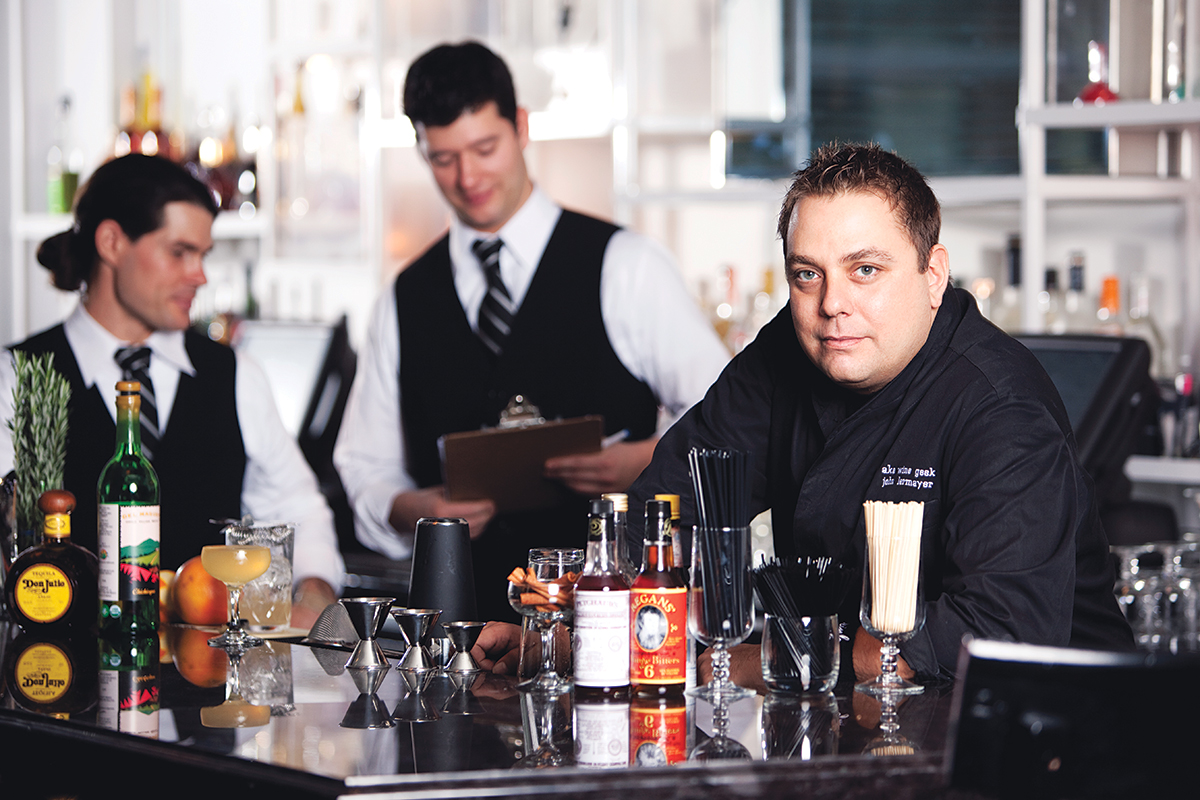Tastemaking: Setting the Bar

Photograph by Diana Levine
Weeks before the debut of Woodward at Boston’s Ames hotel, 13 staffers gathered at the bar, six glasses of gin before each one. They spent the next 90 minutes listening and sipping as a Plymouth Gin “brand ambassador” detailed the spirit’s history and demonstrated cocktail recipes, all under the watchful eye of consultant John Lermayer, a Miami bartender of national acclaim.
Call it familiarity training, product education, even drinking on the job. But geeking out on booze teaches a bar staff more than how to distinguish quality spirits from swill, says Lermayer, who is deployed by Ames’s parent company, the Morgans Hotel Group, to train employees at its growing roster of bars. Given the transient nature of the industry, he explains, the taste-and-learn process is crucial to keeping talent. “Give bartenders everything they need to know—how to taste the spirit, how to respect the spirit—and you’ll see dedication,” he says.
Overly earnest? Maybe. But in today’s fast-changing cocktail world, it’s not enough to mix a good Jack and Coke. Bartenders must also know what’s in a Sazerac and where their bitters come from. As a result, “mixology consulting,” during which everything from ice to uniforms gets scrutinized, is virtually mandatory for new watering holes. Experts have been shipped in to open the InterContinental and Nine Zero hotels; New York bar owner Sasha Petraske, known for Manhattan “speakeasies” like Milk and Honey and Little Branch, is consulting on the W Hotel nightspot Descent, set to open next month.
Not everyone takes it to Lermayer’s level, though. He even brought in bar-world luminaries like Dale “King Cocktail” DeGroff to lead staff seminars, which is like having Grammy winners sing TV jingles. “Empowering bartenders makes them better at everything,” Lermayer says. “They’ll never work the same way again.”